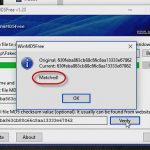Using the Recycle Bin in SharePoint 2010. Delete, restore & clear end user recycle bins
Using the Recycle Bin in SharePoint 2010. Delete, restore & clear end user recycle bins
In this blog we will explore how to add items to the end user recycle bin. Delete items from the end user recycle bin. Then clear the items that have been deleted from the end user recycle bins.
We will also explore how to restore items from either of the recycle bins.
Recycle Bin Blog Environment

For this blog we have created a simple hierarchy of a site collection with a team site as the top level site template and a sub site based on the blank site template. We have added a document library to the sub site and populated it with 2 Microsoft Word 2010 documents. We have uploaded 10 Microsoft Word 2010 documents into the Shared Documents document library of the top level team site.
We click on the link at the top of the Shared Documents Web Part to take us to the document library. Of course we could have clicked on the link in the quick launch as well.
Recycle Bin Blog Delete Some Documents.

We click on the Documents tab of the SharePoint 2010 Document Library user interface to change the ribbon into the mode to interact with one or more of the documents in the document library. Notice how the ribbon area changes from showing the bread crumb navigation control, to displaying the icons used to interact with the objects in this particular container (document library).
In SharePoint 2010 we now have the ability to work with multiple documents at once even in a Standard View. Some of the options are not available when we select multiple documents however Delete Document is still available. We will select documents number 6 – 10 by selecting the check boxes to the left of the items as shown here, and then clicking on the Delete Document Icon in the ribbon.
Using the Recycle Bin Accept Message Box

We will go ahead and click ok on the dialog box asking if we want to send these items to the site Recycle Bin. Notice the terminology referring to the 'site' Recycle Bin. To a Developer, Farm Administrator, or Site Collection the word site is often used when referring to a Site Collection. To most users it is referring to a SharePoint 2010 SPWeb object which is what they get to interact with when they type in a url and are taken to a location in SharePoint. Ironically enough in this case the items will be sent to the 'end user' recycle bin. It's nothing to be concerned with from an operational perspective, it's just a little confusing when you star t with SharePoint 2010.
Using the Recycle Bin Post Delete

The documents we deleted have been removed from the Shared Documents document library. We now see only the remaining 5 documents in the all items view.
Using the Recycle Bin Looking in the Recycle Bin

To look at the contents of the end user recycle bin you simply click on the link in the quick launch bar 'Recycle Bin' which is shown with the same icon most Microsoft Windows users are familiar with.
Using the Recycle Bin Options

When we clicked on the Recycle Bin link in the quick launch bar we were taken to the recycle bin. This is often referred to as the 'first stage recycle bin'. Depending on the settings that the Farm Administrator has configured, items will generally remain in this area for up to 30 days (configurable by Farm Admin) and then they will be automatically emptied. From here you can do several things.
1. Nothing – if you do nothing most likely the items will be deleted after 30 days.
2. Select and then delete one or more of the items. In which case they will be moved to the Site Collection Recycle bin for the remainder of their 30 day period.
3. Select and then restore one or more items. In which case they will be returned to their original location.
The next few steps will outline deleting and restoring items from here.
Using the Recycle Bin restoring an item.

To restore an item to its original location simply select the item(s) (check the box next to it (them)) and click on Restore Selection.
We have chosen to restore recyclebinBlog07.docx to its original location.
Using the Recycle Bin accept the option dialog box.

We are presented with a warning dialog box to make sure we want to proceed with the Restore of our item. We do so we click OK.
Using the Recycle Bin Verify the Restore.

The item, recyclebinBlog07.docx has now been moved to its original location and no longer appears in the all items view of the Recycle Bin. In order to verify this we will click on the Shared Documents link in the quick launch bar to make sure its back in it's original location.
Using the Recycle Bin item verified.

We can see that the item has been properly restored to its original location. We then click the Recycle Bin link again so we can try the Delete Selection option which will move our item to the Site Collection Recycle Bin.
Using the Recycle Bin Delete Selection

We will now select all of the remaining documents except recyclebinBlog10.docx, and this time we'll choose Delete Selection which will place them into the 'second stage' or Site Collection recycle bin for the remainder of their initial 30 day period. (Note: By clicking the check box to the left of the Type column we could have selected all items.) We then click Delete Selection.
Using the Recycle Bin Are You Sure

We are presented with an Are you sure dialog box. In our case we are sure so we will choose OK. This will move the selected items to the 'second stage' (Site Collection) recycle bin. From there a Site Collection Administrator can restore items or delete items.
Using the Recycle Bin from a subsite.

We can see that is only one item left in our Recycle Bin. At this point if we are Site Collection Administrators we can go into the Site Collection Recycle Bin and Restore or Delete items from there but for now we will go to a Sub Site and put some items into the 'end user' recycle bin. We click on the SubSite link in the quick launch bar and are taken to a sub site which we created for this blog post. The sub site was created using the blank site template and we had gone ahead and added a Document Library and uploaded a few documents to it.
Using the Recycle Bin from Subsite Document Library

We can see that the sub site is sparse compared to the top level site which was created using the Team Site Template. We click on the subsiteDocuments link in the quick launch to go to the all items page.
Using the Recycle Bin moving subsite items into the Recycle bin.

We select all items and choose delete which moves them into the 'end user' recycle bin. We will accept the dialog box warning (not shown). We then click on the Recycle Bin link in the quick launch bar.
Using the Recycle Bin sending an item to second stage

We will check the box next to subsite01.docx and choose Delete Selection to move the item to the second stage (Site Collection) recycle bin. We accept the "are you sure" warning dialog box by clicking OK (not shown).
Using the Recycle Bin the Site Collection Recycle Bin

We choose Site Actions > Site Settings to get to the site settings page. If you are not a Site Collection Administrator you will not be able to do the following steps.
Using the Recycle Bin Site Collection Recycle Bin

We will need to click the link to take us to the settings page from the top level site of our site collection so we click the link that says 'Go to the top level site settings'
Using the Recycle Bin Site Collection Recycle Bin

We click on the Recycle Bin link under Site Collection Administration.
Using the Recycle Bin Site Collection Recycle Bin Items

This takes us to the Site Collection Recycle Bin. There are two options in the left navigation:
'End user Recycle Bin Items' – which show us all the items currently in the end user recycle bins in all the sites of our site collection.
'Deleted from end user Recycle Bin' – which shows us items deleted from the end user recycle bins that haven't met their 30 day limit.
We have very similar options from here as from the end user recycle bins, if we select an item and choose Restore Selection it will go back to its original location. If we choose Delete Item the item will be moved to the second stage recycle bin.
We also have an Empty Recycle Bin Option which will move all the documents into the Second Stage Recycle Bin.
We will click on the Deleted from end user Recycle Bin link to see what's in there.
Using the Recycle Bin Deleted From End User

When we clicked on the Deleted from end user Recycle Bin link the view changed to show us all the items which have been deleted from all end user recycle bins in our site collection.
We have the usual suspects as far as options go but it should be noted that if we select one or more items and choose Restore Selection they will go back to their original location, not back to the end user recycle bin. Also if we select one or more items and choose Delete Selection they are gone and would have be recovered from our backup solution which would most likely require the Farm Administrator to be involved.
Until items are deleted from this area they will count against the Site Collection Quota.
That's it! That pretty much covers how to use the Recycle Bin in SharePoint 2010.
Enjoy!
Spike Xavier
SharePoint Instructor – Interface Technical Training
Phoenix, AZ
You May Also Like
A Simple Introduction to Cisco CML2
0 3896 0Mark Jacob, Cisco Instructor, presents an introduction to Cisco Modeling Labs 2.0 or CML2.0, an upgrade to Cisco’s VIRL Personal Edition. Mark demonstrates Terminal Emulator access to console, as well as console access from within the CML2.0 product. Hello, I’m Mark Jacob, a Cisco Instructor and Network Instructor at Interface Technical Training. I’ve been using … Continue reading A Simple Introduction to Cisco CML2
Creating Dynamic DNS in Network Environments
0 642 1This content is from our CompTIA Network + Video Certification Training Course. Start training today! In this video, CompTIA Network + instructor Rick Trader teaches how to create Dynamic DNS zones in Network Environments. Video Transcription: Now that we’ve installed DNS, we’ve created our DNS zones, the next step is now, how do we produce those … Continue reading Creating Dynamic DNS in Network Environments
Cable Testers and How to Use them in Network Environments
0 727 1This content is from our CompTIA Network + Video Certification Training Course. Start training today! In this video, CompTIA Network + instructor Rick Trader demonstrates how to use cable testers in network environments. Let’s look at some tools that we can use to test our different cables in our environment. Cable Testers Properly Wired Connectivity … Continue reading Cable Testers and How to Use them in Network Environments





See what people are saying...